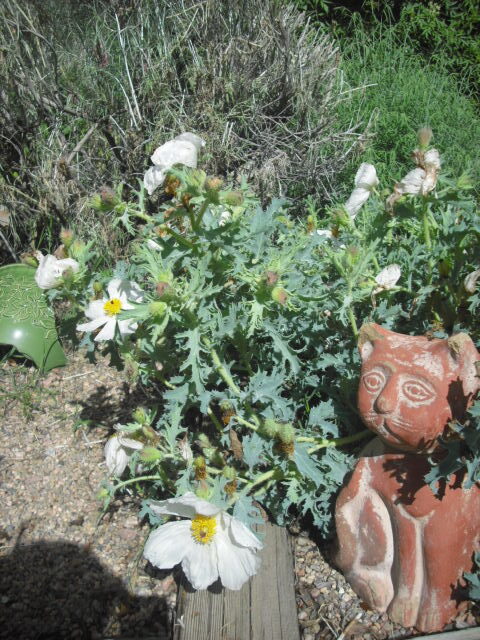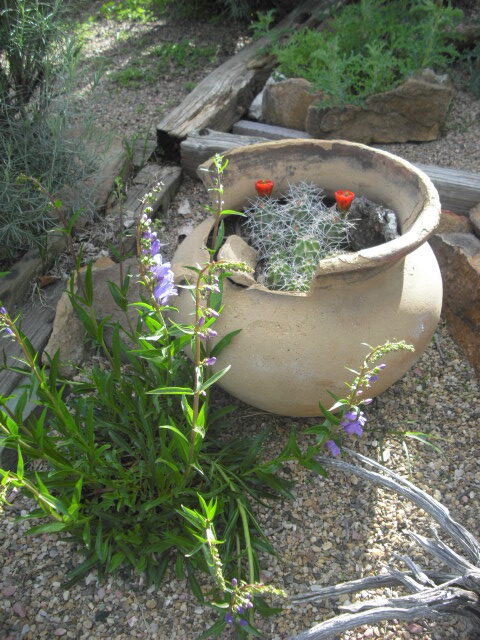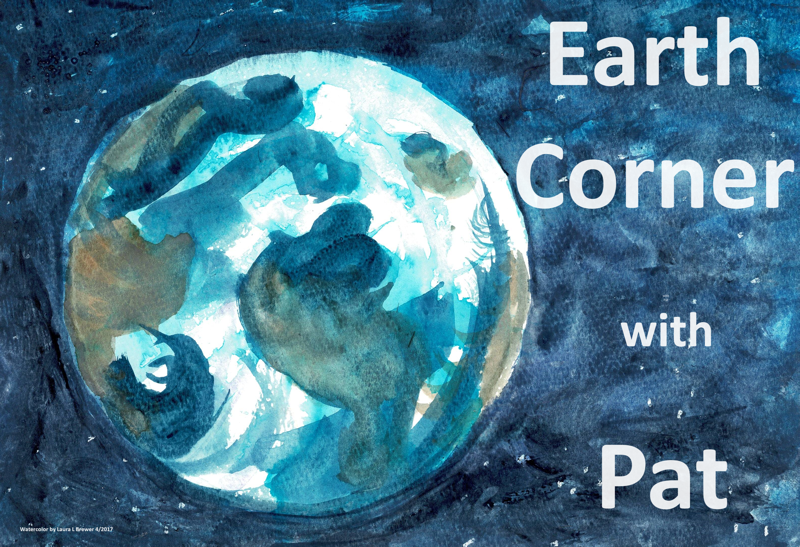Welcome to Earth Corner!
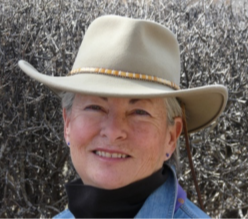
My name is Pat Walsh, but you may remember me as “Ranger Pat.” I’m lucky to have worked for New Mexico State Parks for 17 years before retiring in 2022. And I’m lucky to live here in Raton, where I moved in 2005. We live in a wonderful corner of the planet, and this monthly column will explore ways we can appreciate and protect our piece of paradise. As someone who has lived in many places, I really value everything Raton has to offer, including fresh air, good drinking water and lots of natural spaces. Since I’m passionate about nature, it’s great that I can walk to Climax Canyon Nature Trail, or drive 15 minutes to get to Sugarite Canyon State Park. Being on a trail is my happy place!
I was born in the Washington D.C. area and adopted by an Army officer and his wife. As part of a military family, I grew up in various places including Virginia, Hawaii, Texas and Panama. I graduated with a journalism degree from Arizona State University and worked in the Phoenix Bureau of United Press International. Later I became a UPI foreign correspondent in Colombia, South America for two years, then worked for UPI in Washington D.C., and finally served as a reporter for a suburban edition of the Miami Herald newspaper in Florida.
From Florida, I moved to Colorado to do graduate work in environmental studies. During my ten years in that state, I worked as a seasonal (temporary) park ranger and an educator at Denver Botanic Gardens before moving to Raton. As a regional interpretive ranger for N.M. State Parks, I provided public programs on nature and culture, ran school field trips, and coordinated interpretive events for eight different parks.
These days, I enjoy almost daily trail hikes with my guy and our two dogs, while the cats guard the house. I’m also working (voluntarily) to promote communication about the earth, including solutions to current challenges. We’ll celebrate successful local solutions to some of those challenges in this column.
The first column appeared next Sunday, March 10, which happened to mark my birthday. In it, I have explored my relationship with water and the meaning of water in our part of the world. I also offered up some ways to conserve this precious resource that you may not have considered!
Thank you for joining me here in Earth Corner. A new article will be published each month.
Topics
- Every Day Should be Earth Day – Editorial by Laura Brewer
- Everything We Have Comes From the Earth
- Water – A Precious Resource
Everything We Have Comes From the Earth
Posted April 6, 2024 – By Pat Walsh
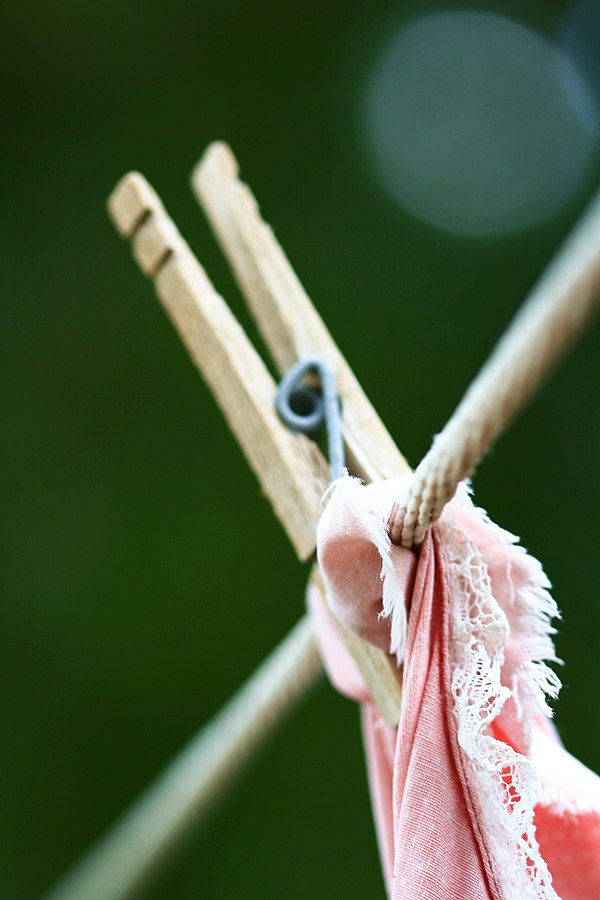
I remember casually saying this to some Raton Intermediate School students a few years ago. A boy rushed across the room to grab a stapler. “Even this?” he said. Yes, I replied. The plastic body came from petroleum. The staples came from metal mined from the earth. He picked up a few more items, and each time I answered, “Yes.”
Look around you. Your home. Your possessions. Your clothes. Your food. It all comes from our home planet. Earth Day is Monday, April 22. But maybe we should rename those 24 hours as “Earth’s Day.”
Just as on Mother’s Day we honor what moms do for us, maybe “Earth’s Day” could spark gratitude for all our planet provides and encourage us to give little gifts in return.
What little gifts, you say? Here are some suggestions:
–If you have a clothesline, hang out your clothes and let the sun and wind dry them instead of your electric dryer. For me it’s a restful and sunny habit!
–Rather than turn on your car engine from the house, wait until you get in your vehicle. Modern cars need very little time to “warm up.” Cold outside? Put on an extra jacket instead of running a vacant car to heat the interior.
–Check your fridge for food that needs to be eaten soon. Reducing food waste ranks third out of 100 solutions for reversing human-caused climate change, according to the non-profit Project Drawdown.
–If you need something new, consider spending a bit more for a better quality and preferably U.S.-made item that will last longer. Fewer purchases, fewer things in the dumpster.
This idea of being good to the earth appears in many belief systems. Scientist Katharine Hayhoe, a Christian and climate ambassador for the World Evangelical Alliance, writes, “What is more Christian than to be good stewards of the planet…?”
The U.N. Environment Program’s website Religions and Environmental Protection notes that in Judaism, tradition holds that “the land and environment are properties of God, and it is the duty of humankind to take care of it.” UNEP then cites similar beliefs in religions worldwide.
Botanist and author Robin Wall Kimmerer writes about her childhood camping trips in New York’s Adirondack Mountains. Kimmerer, an enrolled member of the Citizen Potawatomi Nation, said her father greeted each morning by pouring fresh coffee onto the ground as an offering.
Kimmerer writes that such offerings “say ‘Here we are,’” and afterward she hears “the land murmuring to itself, ‘Ohh, here are the ones who know how to say thank you.’”
Perhaps we can practice how to say thank you for our beautiful corner of the earth.
For more information:
- https://drawdown.org
- Saving Us: A Climate Scientist’s Case for Hope and Healing in a Divided World, by Katharine Hayhoe.
- Braiding Sweetgrass: Indigenous Wisdom, Scientific Knowledge and the Teachings of Plants, by Robin Wall Kimmerer.
Help our Earth – Editorial by Laura Brewer
Every day should be Earth Day, but officially we celebrate in the U.S. on Monday, April 22, 2024. Below is a graphic of some of the things one can do to help our Earth.
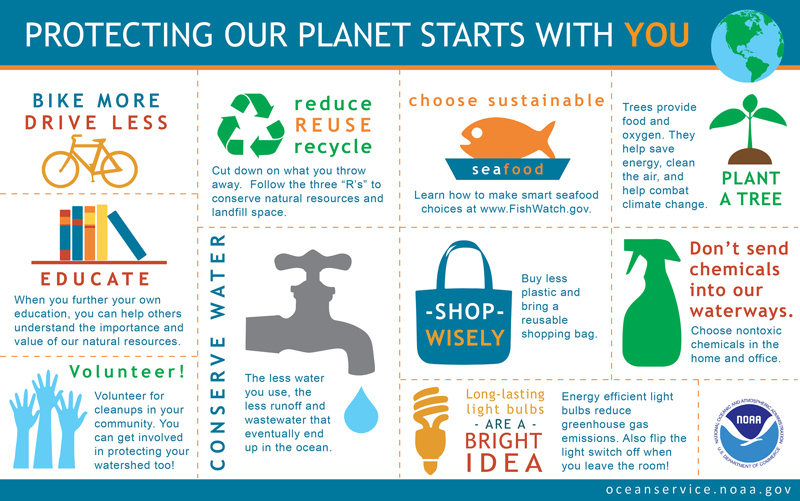

Water – A Precious Resource
Posted March 10, 2024 – By Pat Walsh
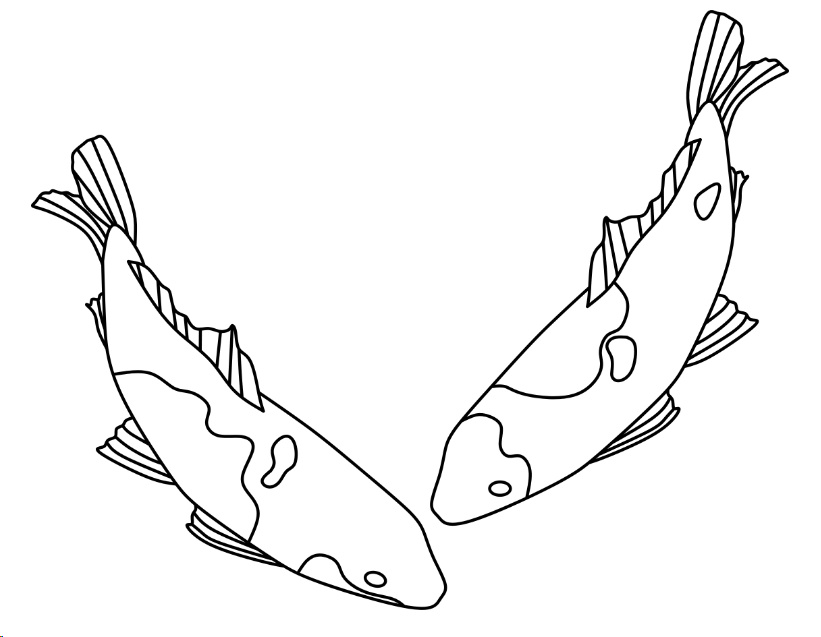
March 10 is my birthday. That makes me a fishy Pisces, with the watery blue aquamarine as my birthstone. And as a kid, I got to swim in the ocean.
While at times I feel landlocked in New Mexico, I’m grateful I live in Raton with its historically plentiful and great-tasting water supply. During my 17 years as a N.M. State Parks ranger, I often spoke with students about how water is “more valuable than gold.” So it only seems appropriate to begin my series of columns called Earth Corner by focusing on water.
I don’t know about you, but I often take water for granted. I make tea, wash my hands, flush the toilet, take a shower. It’s just always there.
Until it’s not. Take the wealthy subdivision built outside the city limits of Scottsdale, Arizona using a loophole that didn’t require a water supply. Residents relied on trucks bringing in city water—until Scottsdale faced a recent shortage from the drought-ravaged Colorado River. The city temporarily halted the subdivision’s water use, so its own city residents would have enough.
Computer climate models from agencies like NASA have for years predicted a hotter, drier Southwest. Regardless, Southwestern cities (including Albuquerque) have continued to boom. Fortunately, thanks to foresighted officials, Raton not only gets water from Lake Maloya, but we also have rights to water from Eagle Nest Lake.
Nevertheless, when I was based out of Sugarite Canyon State Park, I saw Lake Maloya’s water level drop quite low at times. And in 2021, Sugarite temporarily closed the shower building because of low flows from groundwater springs. To my knowledge, that was a first since Sugarite became a park in 1985.
So things appear to be changing, and our water supply may not be guaranteed.
Indigenous peoples have lived in the dry Southwest for thousands of years. Those traditional cultures consider water sacred. How would that approach affect our use of water?
One way to save water is as easy as turning off the light when you leave a room. About 65 percent of U.S. electricity comes from power plants that boil water to create steam to generate electricity, according to the non-governmental Union of Concerned Scientists.
Another way is to think about the food on our plates. You know that old line, eat more fruit and vegetables? Raton already has many backyard gardeners and fruit trees that provide locally grown and tasty items like tomatoes and peaches. Turns out that, according to National Geographic, it takes much less water to grow grains, vegetables and beans than it does to produce animal products.
Meanwhile, on another front, some Ratonians are shrinking their thirsty green-grass yards to make room for drought-hardy native plants like chocolate flowers, prickly poppy and penstemon.
A very pretty way to use less water, indeed!
Interested in learning more? Try reading The Big Thirst: The Secret Life and Turbulent Future of Water, by Charles Fishman.
